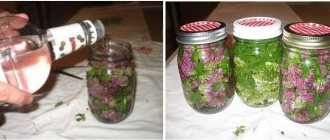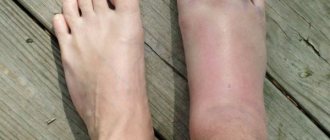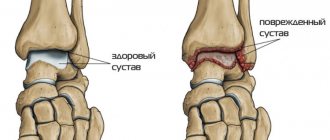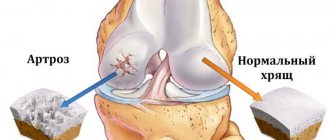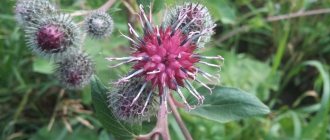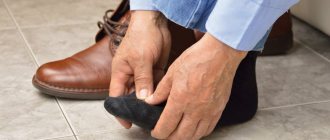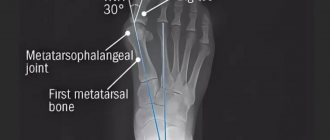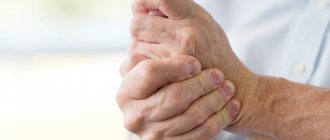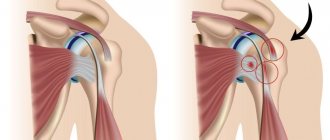Osteoarthritis of the foot is a degenerative and inflammatory disease that affects the small joints of the foot. The lower limb is subjected to increased stress, so the joints quickly “wear out”. The disease develops very slowly, and in the initial stages of the disease, patients may not pay attention to the discomfort they experience when walking. Subsequently, as the pathological process progresses, the supporting function of the lower limb suffers. At the Yusupov Hospital, rheumatologists examine patients using the latest equipment from the world's leading manufacturers. This allows you to quickly establish an accurate diagnosis and prescribe treatment.
Therapy for osteoarthritis of the foot is carried out using modern medications that are effective and have a minimal range of side effects. Rehabilitation clinic specialists provide massage, individual physical therapy sessions, and physiotherapeutic procedures. Severe cases of osteoarthritis of the foot are discussed at a meeting of the Expert Council with the participation of professors and associate professors, doctors of the highest category.
Leading rheumatologists, orthopedists, and rehabilitation specialists collectively develop treatment tactics for each patient. The medical staff professionally performs all procedures and is attentive to the wishes of patients and their relatives. Thanks to a multidisciplinary approach to treating patients, doctors are able to quickly stop the inflammatory process, prevent the destruction of articular cartilage and the development of disability.
Arthrosis and arthritis: what is the difference
Both diseases affect human joints. The quality of life of people who suffer from one of these illnesses is significantly reduced. Although the names of the diseases are similar, their symptoms and manifestations are very different.
Osteoarthritis affects the cartilage of the joint and nearby bones. It is more common in older people. It can be caused not only by age, but also by heavy physical labor or sports activities.
It is difficult to call arthrosis inflammation. But some doctors believe that it is precisely because of the inflammatory process that this disease begins to progress. The cartilage and bone tissues that are located near the joint undergo changes over time. This happens due to the stress that they experience every day. The disease develops slowly.
Arthritis is inflammation that occurs in a joint. It can almost completely destroy cartilage. Unlike arthrosis, this disease is more common among the young population.
The development of the disease and inflammatory process occurs due to autoimmune factors. That is, immunity independently affects the human body. This process can start due to genetic disorders or infectious diseases.
Inflammation is the culprit behind the onset of arthritis. Bacteria that infect the body's cells have antigens similar to its protein. Therefore, he begins to attack his own tissues. Most often, not only joints are affected, but also internal organs. It could be the heart or kidneys. Few people know that in this case, doctors recommend removing tonsils if a person often suffers from sore throats. Otherwise, there is a high risk of complications in the cardiovascular system and other organs.
If we compare arthritis with arthrosis of the foot, the second disease is more acute. Its symptoms are pronounced, so they are difficult to confuse with something else. Arthritis manifests itself in the form of swelling, severe pain, as well as other, not the most pleasant symptoms.
How the disease will develop in the future depends on the type of arthritis. Almost always, after an acute form, the disease “slows down” and then becomes chronic. Some changes in the joints remain forever, so new outbreaks of osteoarthritis are possible. Sometimes relapses occur and the disease again enters an acute form, joint pain and swelling appear, and the temperature rises.
Osteoarthritis, an inflammatory condition, can be controlled with anti-inflammatory medications. But osteoarthritis is much more difficult to treat, since it mostly remains in a chronic form, changing and destroying joints over a long period of time.
It is necessary to take measures to combat the disease immediately
Timely treatment with folk remedies will stop the pathological process and prevent complex consequences. For arthrosis of the legs, take baths at night. Boil 50 grams of pine needles or 10 pcs. in 3 liters of water. bay leaf for 30 minutes, cool slightly and keep your feet in the rich broth. Then wrap the affected area with a warm sock.
Symptoms of acute pain in the legs can be relieved by simple means, such as a cabbage leaf - pour boiling water over it, knead it with a rolling pin or cut it with a knife and apply it to the sore spot. This reduces the symptoms of the inflammatory process, relieves pain, and normalizes metabolism.
Symptoms of foot arthrosis
Foot arthrosis has a large number of symptoms. All of them can manifest themselves in different ways and directly depend on how far the disease has developed. This pathology in the early stages can be practically asymptomatic. This is where its danger lies. After all, any disease, including arthrosis of the foot, is much easier to cure at the initial stage.
At first, a person who has begun to develop arthrosis of the foot joints may suffer from fatigue after walking. Those distances that were previously covered without problems are becoming increasingly difficult to cover. By evening, a feeling of fatigue appears in the legs, the lower limbs swell and “hum.” Periodically, when moving, a crunching sound may appear in the joints. Many people do not take all these symptoms seriously and simply do not pay attention to them.
If treatment for foot arthrosis is not started at the initial stage, the condition will slowly but surely worsen. In the future, symptoms will appear that can no longer be ignored. These include:
- Aching pain in the legs. They will occur not only after physical activity, but also when the body is at rest. Every day the pain intensifies and grows;
- The bone on the big toe begins to “grow” and increase in size;
- The gait changes and lameness appears.
The body becomes sensitive to weather changes. Before rain, snow or sudden changes in temperature, the lower limbs begin to “twist”. Such symptoms can reduce the quality of life. Many people are deprived of joy and cannot perform simple actions at home or at work. It becomes difficult to squat, bend, and do anything that involves bending and straightening the limbs.
The main symptoms of foot arthrosis include:
- Feeling of stiffness in the legs in the morning after waking up. Joints don't move well. If you do a warm-up, the symptoms will subside;
- Decreased physical activity. In the final stages of sling arthrosis, it becomes very difficult and painful for a person to move. Therefore, he tries to unload the leg suffering from the disease and transfers the weight of the body to the other. Because of this, the gait changes and a noticeable lameness appears.
- Hyperthermia occurs over the lesion, the skin turns red, and the tissues swell;
- During physical activity, the legs get tired very quickly;
- When the joint moves, a crunching sound appears;
- Pain in the joint initially occurs only after physical activity. Then they intensify and make themselves felt even at rest;
- Meteosensitivity appears; in the cold season, aching pain is observed in the legs;
- The shape of the foot changes, causing the bones to become deformed and calluses and corns to appear on the skin of the feet.
If you notice the first signs of foot arthrosis, you should immediately consult a doctor and undergo the necessary examinations. The doctor will be able to prescribe you treatment that will prevent further development of the disease in the future.
Physiotherapeutic assistance
Physiotherapy for early-stage osteoarthritis forms the basis of complex therapy and is a reliable assistant in the treatment of DOA.
Modern medicine has a sufficient range of physiotherapeutic treatments to slow down joint degeneration:
- UHF therapy;
- high-frequency magnetic therapy;
- ultraviolet irradiation;
- electrophoresis, paraffin;
- mud baths.
Treatment is a long and sometimes painful procedure that requires effort and patience from a person. However, if you follow all the doctor's instructions, there is hope of avoiding surgical intervention.
In case of inaction or unwillingness to cooperate, the patient is doomed to surgical treatment - arthroplasty, arthrodesis or endoprosthetics.
Anton Epifanov about physiotherapy for joints:
Causes of arthrosis of the foot
The risk group of people who are susceptible to arthrosis includes those who have reached their fiftieth birthday. After all, for a disease to gain strength, it needs time. The cause may be problems or defects of the musculoskeletal system, including flat feet. The load on the bones and joints begins to be distributed unevenly. Therefore, the cartilage tissue wears and wears away, damaging bones and joints. In overweight people, this happens much faster, as it increases the load on the limbs.
Not the last factor is shoes. If it doesn't fit, is too loose or, conversely, tight, it will only worsen the symptoms. If we are talking about women, then arthrosis of the feet can be caused by beautiful, but uncomfortable high-heeled shoes. In them, the foot does not perform its shock-absorbing function, and the entire load is transferred to the toes. This can cause arthrosis of the toe.
Often this disease can be a consequence of one or another disease. It can be:
- Injuries. Fractures, ligament ruptures and joint dislocations can cause post-traumatic arthrosis. Most often it occurs in professional athletes;
- Dysplasia and abnormal tissue development that arose during the formation of the skeleton before birth;
- Rheumatoid arthritis or other autoimmune diseases that affect connective tissue;
- Inflammatory diseases, including arthritis, which were not treated or were treated incorrectly.
All of the above reasons lead to poor blood circulation in the legs, and also spasm of some muscle groups. An insufficient amount of nutrients enters the cartilage tissue. Therefore, they lose their elasticity and collapse. The joint gap becomes narrow, and the development of arthrosis of the foot begins.
Specialist recommendation
The process of joint degeneration that has begun cannot be resisted. The only way to finally get rid of it is through surgery. However, every effort must be made to ensure that the process of joint destruction begins as late as possible.
All you need is an active life position and adherence to simple rules of therapeutic prevention:
- Avoid infection and hypothermia of the body, in particular the joints of the feet.
- Wear comfortable shoes appropriate for weather conditions.
- Observe dietary norms (do not starve), do not abuse sweet, salty, fatty, smoked foods. Actively saturate your body with vitamins and beneficial minerals.
- Exercise and watch your own weight. Most often, the problem of arthrosis of the feet is extra pounds of fat.
- At the first signs of pain, immediately contact a specialized specialist.
All diseases begin in childhood, so engage in therapeutic prevention with your children. Take care of yourself and be healthy!
Classification of foot diseases and types of arthrosis
There are dozens of small joints in the foot. The problem can start in any of them. In modern medicine, there are different types of arthrosis of the foot, which are distinguished by its location. The disease can develop in:
- subtalar ligament;
- cuboid-calcaneal joint;
- metatarsophalangeal joint;
- arthrosis of the toe.
Arthrosis of the foot is also divided by degree. There are the following types:
- Primary.
May occur due to pathology in the foot or after injury or damage;
- Secondary.
Arthrosis of the foot of this degree appears due to diseases that affect the lower extremities. This could be hormonal disorders or any other;
- Polyarthrosis.
This is a complex degree of arthrosis of the foot. The disease affects not one, but several or more joints at once.
Treatment is prescribed depending on what type of arthrosis affects the foot.
The essence of the problem
The diagnosis is a chronic disease of the joints, caused by their deformation with limited mobility. In medical terminology, this condition of the distal supporting system of the lower limb is defined as degenerative-dystrophic damage to the joints associated with tissue destruction of the articular cartilage covering the head of the articulating segments and accompanied by an acute inflammatory reaction.
This is a progressive disease that leads to the loss of the strength and elastic properties of cartilage, the appearance of loose growths (osteophytes) on the articular surface, followed by its destruction and ossification.
The “positive” aspect of arthrological damage is that the clinical condition does not extend beyond the foot joint, but the destruction of cartilage integrity causes an inflammatory reaction in the soft tissues, which worsens the overall clinical picture. The general articular circulation and metabolic processes in the ligamentous-muscular apparatus are disrupted. Degenerative changes in small joints or the thumb develop progressively: a period of remission alternates with exacerbation, which has pronounced symptoms.
Types of arthrosis development
For treatment of arthrosis of the foot joints to be successful, it is necessary to make a correct diagnosis. Each stage of disease development requires a different set of therapeutic measures. Doctors distinguish the following stages of pathology development:
- First. At this stage, noticeable fatigue of the lower extremities appears, as well as “pulling” pain after long walks or excessive physical exertion. At this stage, the patient may not even suspect that he is developing a disease, because he attributes the symptoms to banal fatigue. But if you do not visit a doctor, the disease will begin to gain momentum;
- Second. All the symptoms of the first stage begin to appear more actively. The pain becomes longer and more severe. Calluses may appear on the heels due to improper foot position, the knuckles become thicker;
- Third. The joints undergo serious changes, so the person begins to limp severely. Joint mobility decreases. X-rays show that the gaps between the joints are significantly reduced or disappear completely.
To make a diagnosis, the doctor must conduct an examination and diagnosis. It includes:
- taking an anamnesis, when the doctor asks the patient about all his complaints;
- X-rays and other examinations that will make it possible to accurately determine the condition of the joints, cartilage and bones, and also identify possible changes in their structure;
- examinations that will allow you to study the condition of muscle tissue;
- tests to find out about the state of the body and the nature of inflammation in it;
- measuring the size of the foot so that you can track the dynamics of treatment for arthrosis of the toe or any other joint.
Treatment of arthrosis of the feet
The “insidiousness” of arthrosis of the foot joints is that at the first stage few people notice it. This means that only a few turn to a specialist. And when the disease takes a more serious form, it becomes quite difficult to fight it. That is why it is important to pay attention to the slightest manifestations of this disease.
It is important to remember that arthrosis of the foot does not go away on its own. Don't expect a miracle. Over time, the problem can only get worse. If you begin to feel discomfort or experience regular pain, then this is a reason to consult a doctor.
Drugs for the treatment of osteoarthritis
To improve the mobility of the joint region of the foot, it is necessary to balance the diet, that is, to provide the body with access to vitamins and mineral components. It is important to do therapeutic and preventive gymnastics and massage regularly. However, this is not always possible due to acute pain attacks in the articular segments.
Drug combinations with various pharmacological activities are effective:
- painkillers, analgesics, anti-inflammatory drugs – Prednisolone®, Diclofenac®, Ibuprofen®, Indomethacin®;
- chondroprotectors with the main active ingredients glucosamine and chondroitin – Movex® Active, Teraflex Advance, etc. This group of drugs is aimed at the regeneration of cartilage tissue, stops the destruction of the articular head, restores the biochemical balance in the synovial fluid;
- glucocorticoids are used to block acute pain sensations - Diprospan®, Kenalog®;
- Muscle spasms can be eliminated with the help of muscle relaxants.
General strengthening drugs are important in complex treatment. For this purpose, mineral and vitamin combinations are introduced into the body: Materna® , Vitrum® , Teravit® .
In the initial phase of deforming osteoarthritis (DOA) of the foot joints, warming ointments and gels with anti-inflammatory, antipyretic and analgesic effects, for example, Viprosal® , Menovazin® , Ungapiven® .
All medications are presented for informational purposes.
The selection of a therapeutic treatment regimen occurs according to an individual program, taking into account the physiological, anatomical, age and gender characteristics of the patient.
Treatment of foot arthrosis
Unfortunately, even modern medicine cannot completely cure this disease. But this is not a reason to abandon therapy. Some procedures and remedies can improve the condition of the joints, as well as prevent further deterioration of well-being. With their help, you can avoid complete loss of the ability to fully move.
The following medications are used in the treatment of foot arthrosis:
- Nonsteroidal anti-inflammatory drugs.
These medications can not only relieve inflammation, but also eliminate pain. Available in tablets or capsules for oral administration, as well as in the form of ointments, gels and creams. The doctor may prescribe a course of medications that need to be combined with drugs for external use. The duration of administration and dosage must be selected by a doctor; self-medication in this and any other case is dangerous;
- Painkillers
. They are aimed at eliminating acute pain. In the final stages of the disease, they can be simply unbearable. In this case, the doctor prescribes injections with corticosteroids. It is recommended to do them no more than once a week, and the course is repeated a maximum of twice a year;
- Chondroprotectors.
These are medications that show the best results in the treatment of joint diseases. They allow you to restore cartilage tissue and also prevent its destruction in the future;
- Hyaluronic acid.
Preparations based on it are injected into the joint. It increases the amount of lubrication around cartilage, improves tissue elasticity and reduces friction in joints;
- Anti-arthrosis ointments and gels.
They allow you to accelerate blood circulation at the site of the lesion, which leads to improved nutrition of the joint.
One of the most popular and effective drugs for the treatment of arthrosis of the foot is Artracam. This is a new generation product that belongs to the group of chondroprotectors. It allows you to establish metabolism in the joint.
The main active ingredient in the drug is chondroitin sulfate, which is part of cartilage tissue. Artracam not only has chondroprotective properties, but also inhibits enzymes that destroy joints. The level of proteoglycans increases, metabolism and phosphorus-calcium metabolism improves. Cartilage tissue begins to actively regenerate.
In addition, Artracam relieves pain due to arthrosis of the toe, as it has an analgesic and anti-inflammatory effect. The production of joint fluid accelerates and increases. Therefore, the joints become more mobile, friction between the cartilages disappears, and the intensity of pain decreases.
In addition to medications, non-drug methods can help cope with arthrosis of the foot joints. They are no less effective, but their effectiveness and purpose depend on the stage of the disease. These include:
- Applying a “boot” made of plaster. Such therapy will be effective in the last stages of the disease, when the pathology has already gone too far. Plastering allows you to completely immobilize the limb;
- Wearing special shoes with orthopedic insoles and arch supports. In the early stages, this allows you to improve blood flow and increase metabolism;
- Massage. For arthrosis of the foot, it is useful to do it in courses, but only during those periods when the disease is not in acute form. Then you need to first relieve inflammation, and only then start massages. They will be effective at any stage of arthrosis;
- Laser magnetic therapy, UHF and phonophoresis. They are used in combination with drug treatment to enhance the effect of the drugs;
- Mud. They will work perfectly in combination with other techniques at any stage. They help to “deliver” all the necessary nutrients to the joint for its restoration, and also relieves stiffness in movements;
- Operation. Surgical intervention is a radical solution to the problem. It is relevant when other means no longer work. The operation is performed in the last stages of the disease. The surgeon can fuse parts of the joints or replace them. In the first case, the foot will remain completely motionless, which can significantly reduce the patient’s quality of life. Joint replacement, on the contrary, allows you to maintain her mobility. But the shape of the foot may change.
Physical therapy works well in the treatment of arthrosis of the foot. It will be useful at any stage of joint damage. Gymnastics can not only alleviate the course of the disease, but will also be an excellent preventive measure. Therefore, exercise therapy is almost always prescribed to patients who have been given a similar diagnosis.
Products for pain relief
Great importance in eliminating arthrosis is given to a diet that reduces weight, increases immunity and strengthens the cartilage of the legs. It is recommended to start foot treatment with a 3-day diet of carrot juice and celery. Later, the patient switches to dairy dishes, vegetables, fruits and fresh squeezed carrot juice. Osteoarthritis will stop bothering you if pumpkin, beets, zucchini, green peas, 70 grams of lean meat 3 times a week, porridge, fish, kefir, oatmeal jelly, cottage cheese, pasta with vegetable oil, and weak tea appear on the menu. Avoid coffee, fatty, fried foods, smoked foods and sweets. The patient should eat small, non-spicy foods several times a day.
In the initial stage, osteoarthritis of the foot is recommended to be treated at home. They prepare decoctions, tinctures, make compresses, rub ointments into sore spots, and brew medicinal herbal tea. Mix St. John's wort, immortelle, chamomile, horsetail, birch buds, corn silk, and savory in equal quantities. Brew one spoon of mixed herbs and a bag of black tea with 200 grams of boiling water for 30 minutes. Take 100 grams several times a day. All this improves blood flow, the outflow of lymph in the legs is restored, and the pain recedes.
